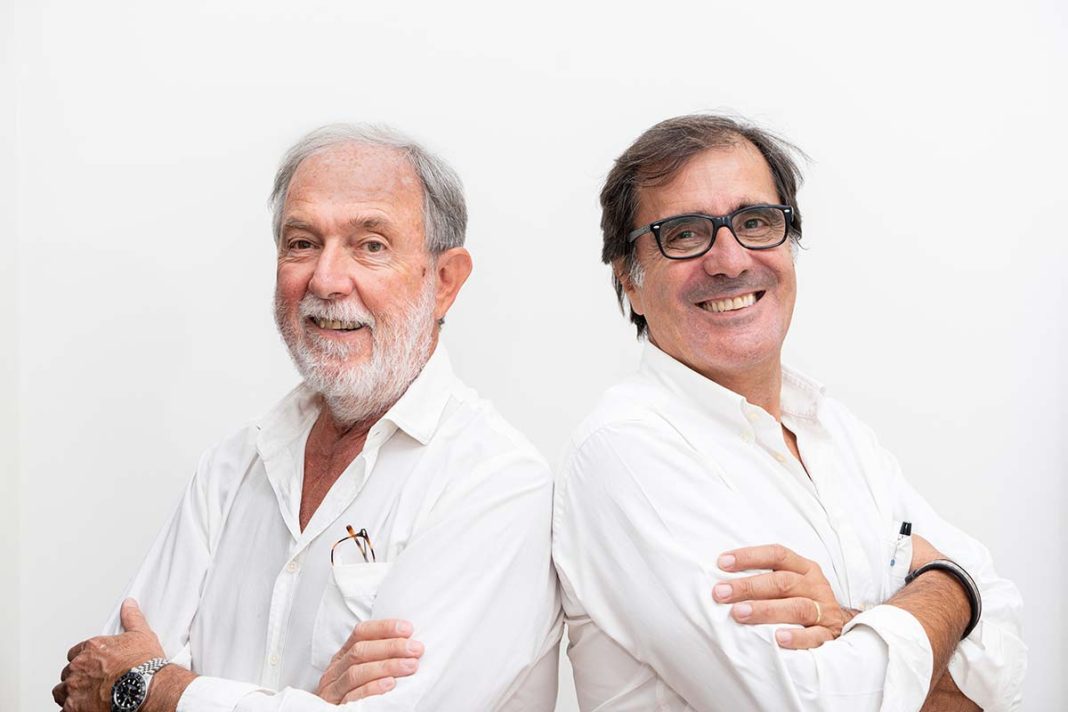DATA SHEET
Portrait photo: Courtesy of Nauta Design
Projects photo: Giovanni Romero (Azzam 180), Carlo Borlenghi (Nautor Swan), Tom van Oossanen (Nilaya Royal Huisman), Giuliano Sargentini, Rob Kamhoot (Southern Wind), Nauta Design (Project Light, Dune, Moonflower)
Simplicity is a design approach that is consistently applied as well as an expression of beauty. Their objective and the instinct are to seek innovation, beauty, and elegance even in the great diversity of the very many boats they have designed since 1985, from the 180-meter yacht, the Azzam from Lurssen, to a 34-foot sailboat. The sailboat has always been a “training ground in beauty” and the greatest functionality, as the “most fascinating floating objects that exists.” This same approach is practiced with consistency and success for motor yachts too. This design, professional, and personal story finds its common thread in a passion for boating in any mode and their mission to seek the highest quality in experiences at sea – one always in the greatest contact with the sea.
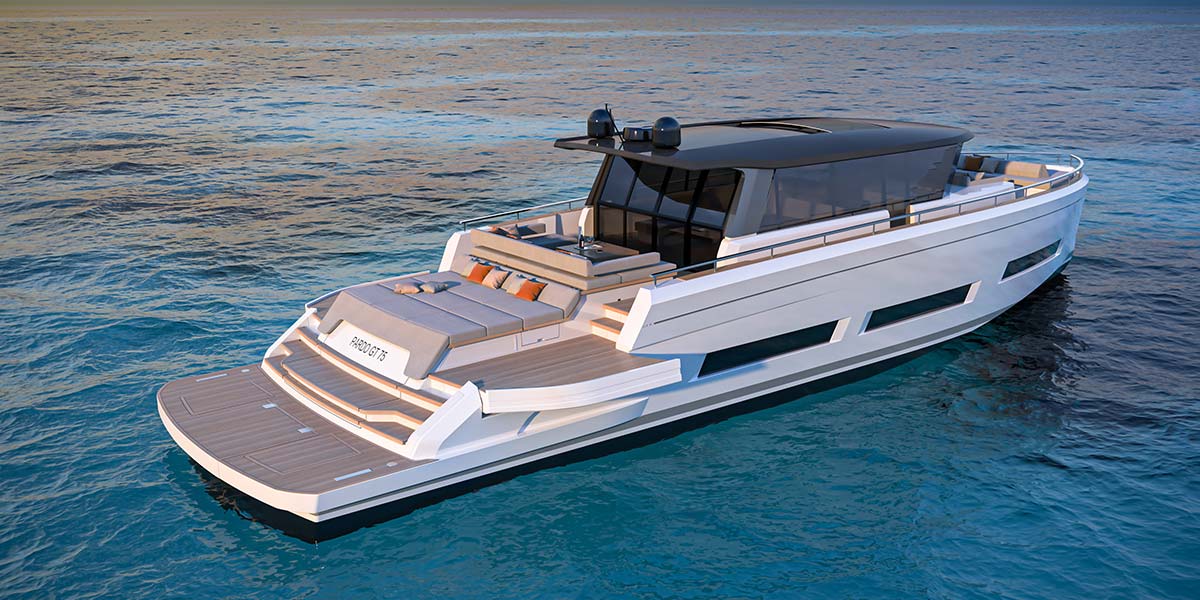
Pardo GT75 by Cantiere del Pardo
You have worked together since 1985. How would you tell the history of your studio, touching on the salient moments?
Mario Pedol: At first there were three of us partners. I transferred my experience in boating (including transatlantic) that I had on Oysters around Italy and then in the Caribbean where I lived for 8 months. That helped me appreciate what matters on a sailboat. Massimo is an organizational powerhouse. He has a wonderful hand in drawing, graphics, and design. We joined our complementary strengths and took part in our first Genoa Boat Show in 1986.
Massimo Gino: We were in the pavilion for designers. Then I worked with airbrush to make designs and illustrations for our first project for a 54-foot boat. The next year we went with the completed boat.
Mario Pedol: A 54-foot to sell with just drawings and a little model – wishful thinking. Five of us partners invested to build it and bring it to the Show.
Massimo Gino: It went well and we sold the second one at the Genoa Boat Show. As builders, we did 15 of them in all over 6 years, 54, 65, and 72 feet. The roles have stayed pretty much the same. As a founding member, Mario handles customer relations, and I handle the design and production. With the increase in the amount of work, these days we have had between 20 and 25 designs going at the same time, including custom designs, semi-custom designs, and serial productions, like the designs for Oceanis and Lagoon, and those for Grand Soleil and Pardo Yachts.
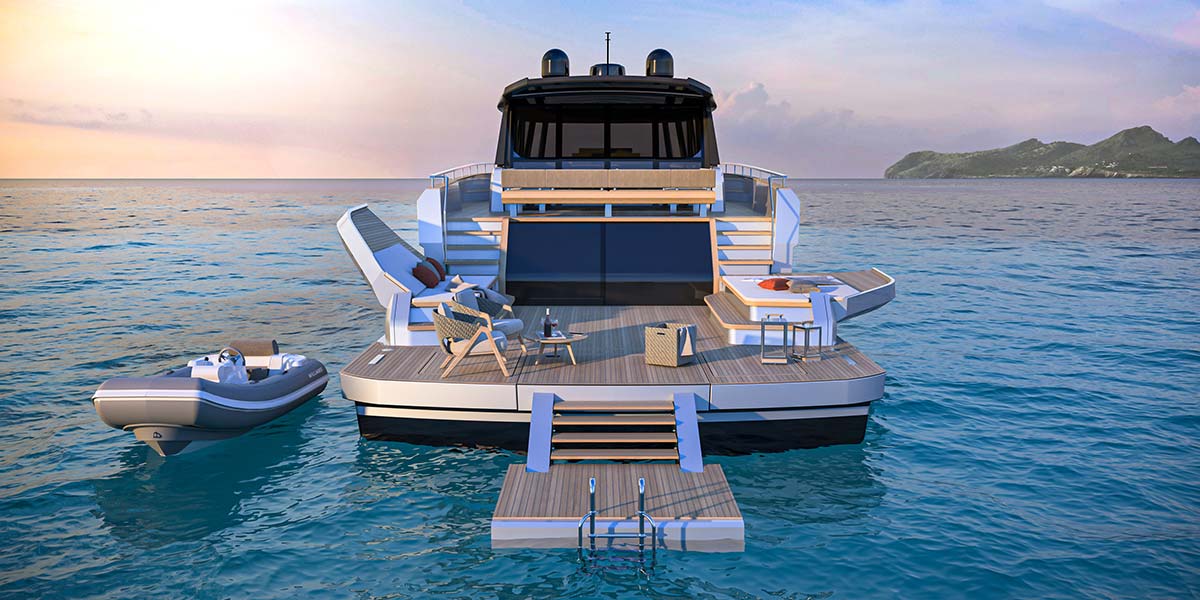
Pardo GT75 by Cantiere del Pardo

Project Light by Fincantieri Yachts
Recently, the motor megayacht sector has become very important in your work.
Mario Pedol: In the 1990s, we had already had a couple of experiences in the world of standard-production leisure motor boats, designing the interiors for Bertram, a long-time American brand, and for Toy Marine in 2003. Then we had a kind of “traineeship” experience squeezed into a year and a half, arm in arm with a great naval engineering partner, Fincantieri Yachts for Project Light, an 80-meter yacht for an Italian client.
It was an icon for us, but the order was unfortunately stopped because of the 2008 financial crisis, but it led to the order for Azzam, a 180-m boat built by Lurssen Yachts. We worked with Fincantieri, the largest Italian shipyard, on regulatory aspects such as the registers for construction standards, and the flag, safety, and operational standards for the boat, as well as all the structural matters for a steel and aluminum boat. This fantastic experience let us be prepared to have a prior example to show when we got the chance to design Azzam.
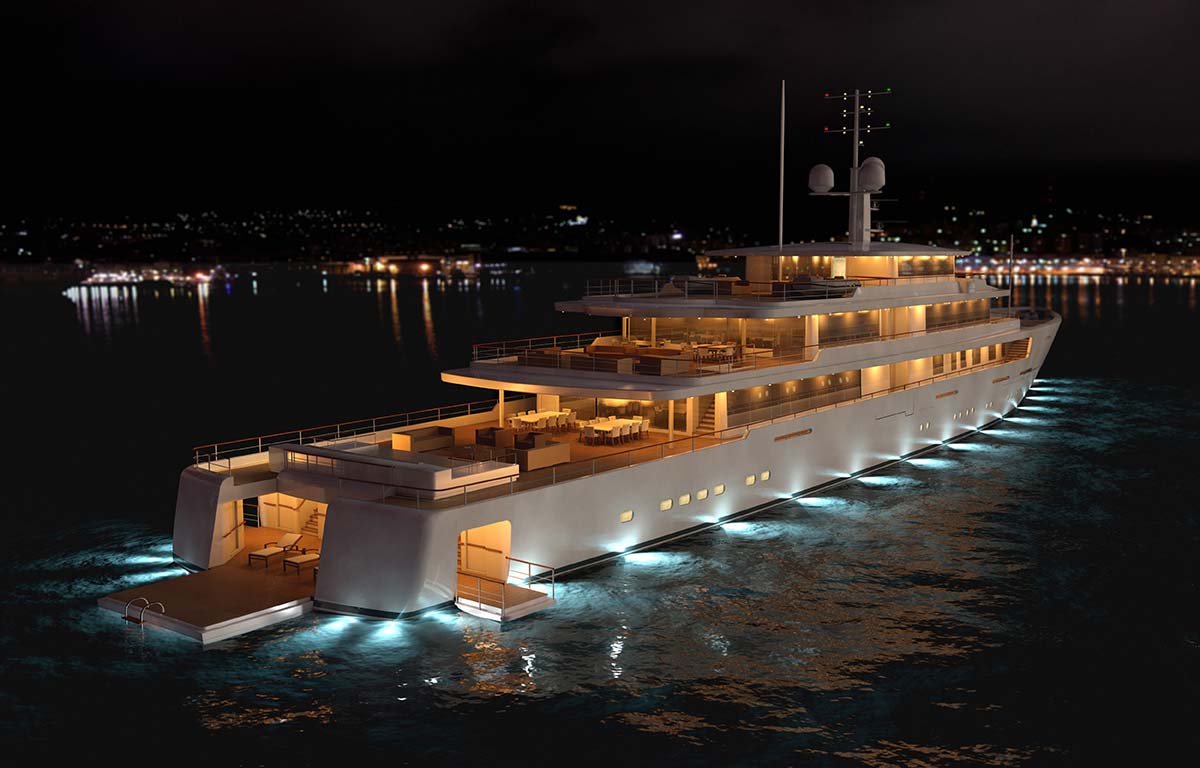
Project Light by Fincantieri Yachts
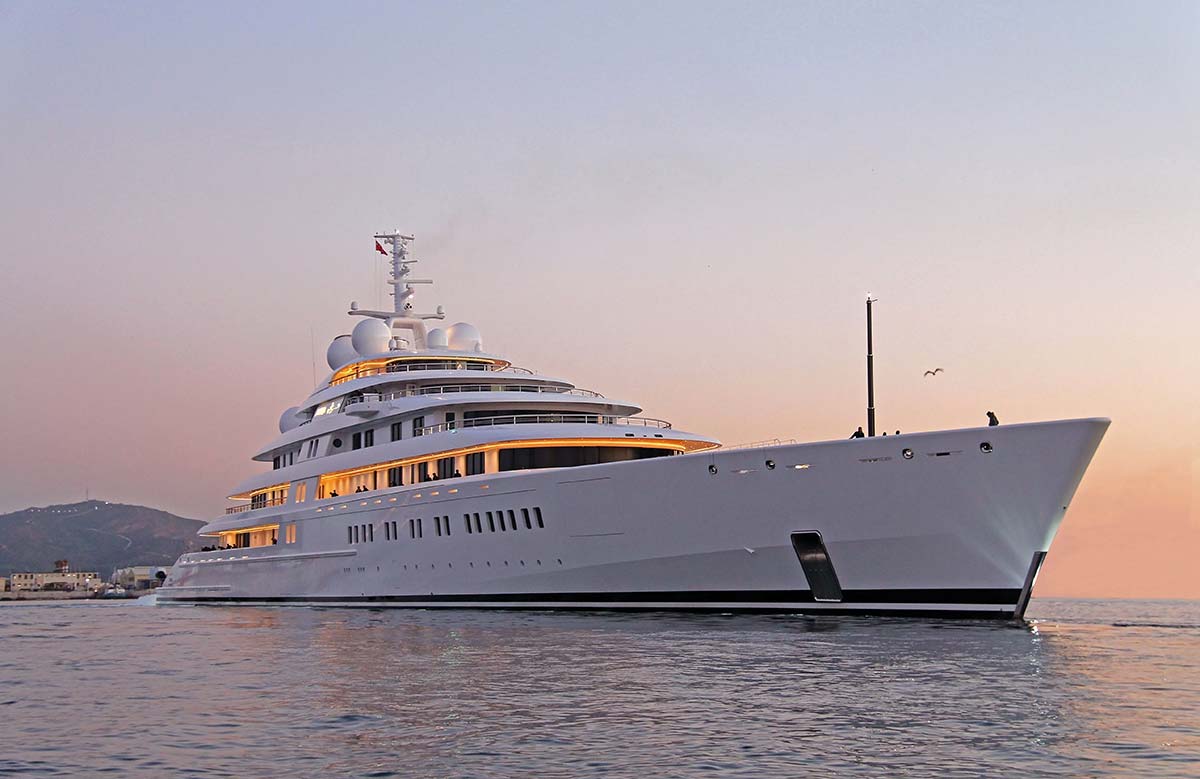
Azzam by Lurssen Yachts
Azzam, a 180-meter yacht has a design approach like that of a ship, including the issues of regulations and standards.
Mario Pedol: Since 2013, when Azzam was first delivered, it has been the longest yacht in the world and still sails with impressive performance. It was a major calling card to enter the world of motor megayachts over 50 meters long. Our approach to designing Light 80 was extremely innovative, adding aspects of the pleasure of life on board in contact with the water, like is typical in sailboats. To sum up the major shift, we revolutionized the relationship between interiors and exteriors in terms of square meters given to each.
For example, we increased the open spaces at the stern, with fewer superstructures and more outdoor space, instead of closing everything inside. Now that’s the standard, but at the time it was an innovation. When Azzam’s owner saw the design for Project Light, he saw something new. Two weeks later, the signed contract came in. The innovative thing was the 50:50 ratio between interior and exterior instead of the usual 75:25, and there was a drastic reduction of visual barriers between inside and outside with very large windows.
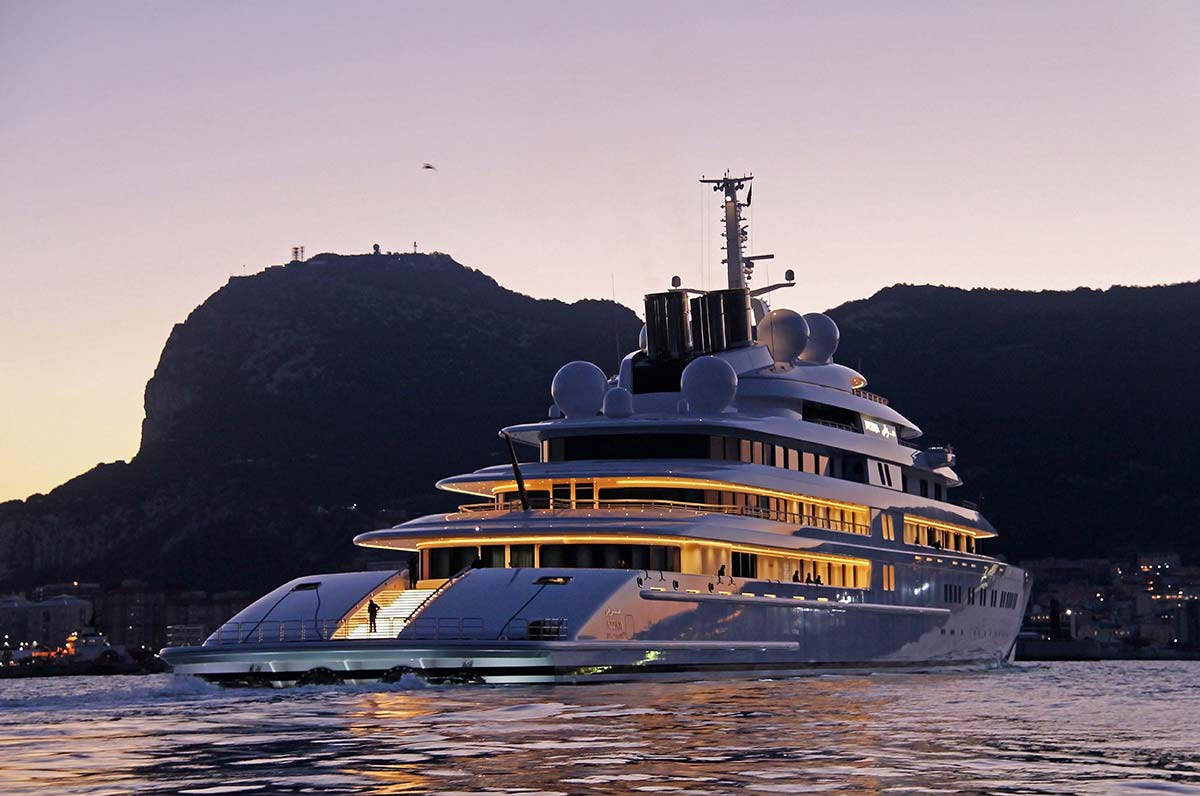
Azzam by Lurssen Yachts
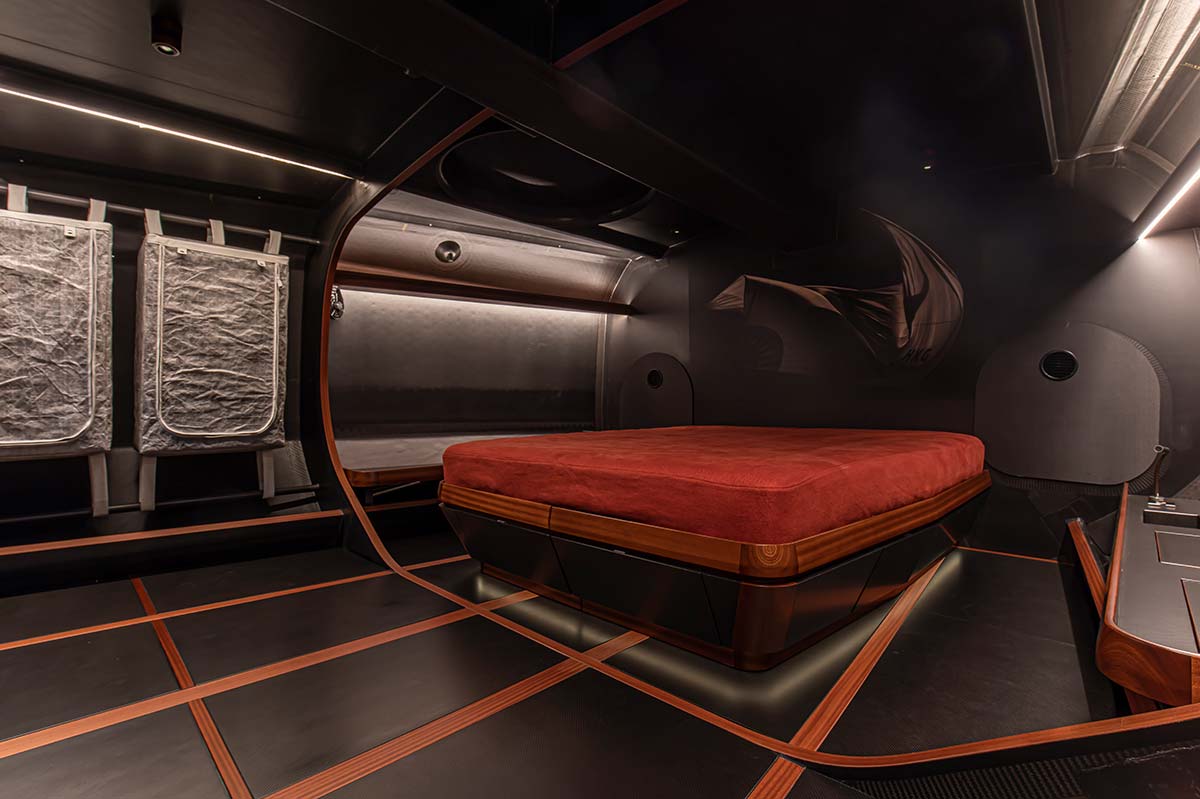
MY Song ClubSwan 80 by Nautor Swan
You later introduced the idea of the openable stern.
Mario Pedol: For another design of a 75-meter yacht, Dune, in 2017, the owner wanted to be closer to the sea with a very low lower deck. We had the idea of making the end of the stern openable to increase the flat surface, removing the side barriers to be able to move without interruption around it between the stern and the two side platforms. We reduced the vertical barriers and opened the view of the outside and surroundings as much as possible. The walls can be taken down to obtain a large partly uncovered space/beach, partly covered with shaded areas. It is all interconnected and the space available at the stern was more than doubled.
Another major moment was the patent for The Island.
Mario Pedol: We felt that the aesthetic and functional content met the requirements for significant uniqueness and originality with this innovative beach club with its openable side platforms and the internal and external spaces fully interconnected by a circular path that opens the view to the boundless horizon, joining the person with the nature around them. We patented this invention in 2017 and then again in 2022, with its name: The Island.
Massimo Gino: We worked a lot in this direction for sailboats as well. For example, the latest 154 just launched by Royal Huisman, Nilaya, has a new openable stern layout and a beach club area on the main deck.
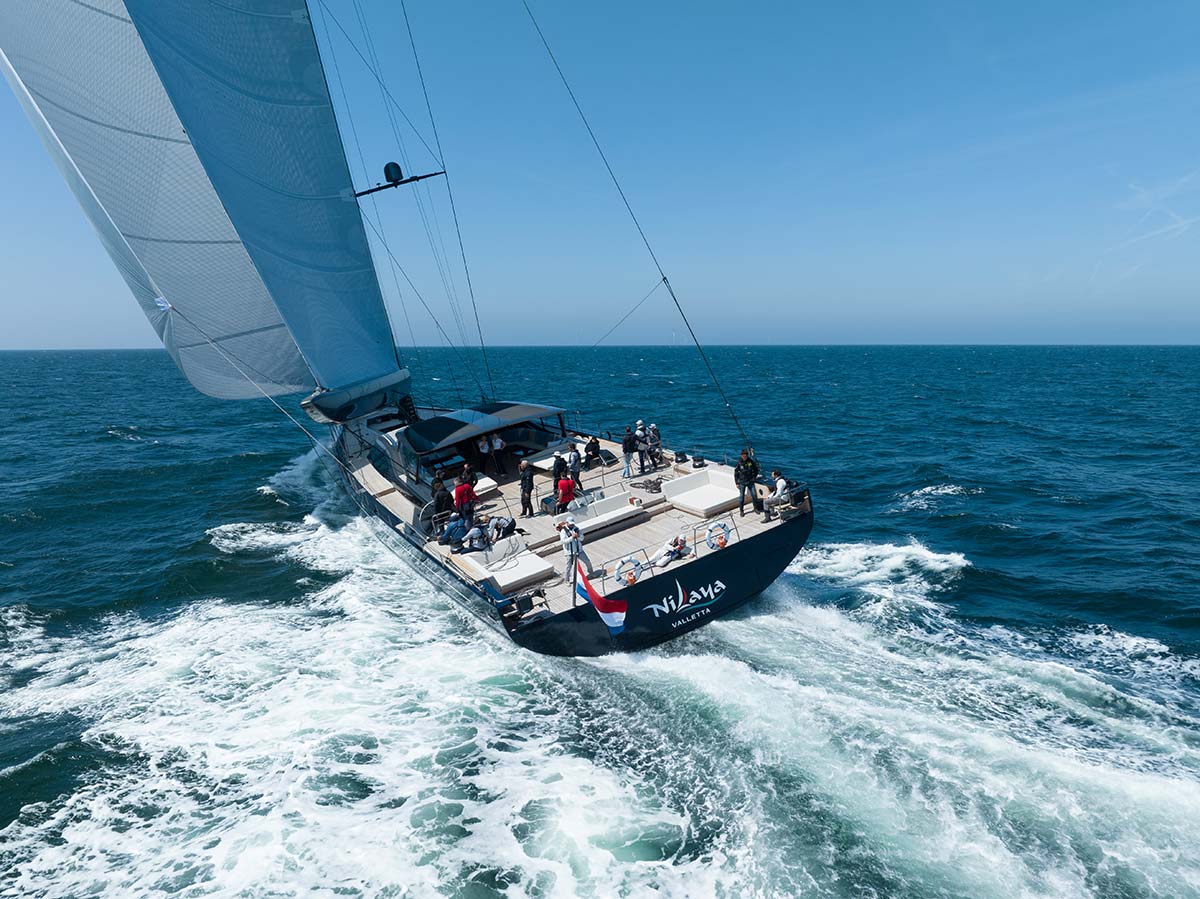
Nilaya by Royal Huisman
In the sailboat world as well, there have been impressive changes, especially in terms of the interiors, where the relationship between, form, space, and function is optimally applied.
Massimo Gino: It depends on the size of the boats. For smaller boats, there is fitting together volumes, functions, and special, difficult areas because you have to make use of every centimeter without growing too much in height to keep the sporty, elegant look. It is harder to find the exact fits, which are essential for circulating on board as well as to make the best use of the available volume. As you gradually go up in size, this constraint because less intense because there are separate decks. Before you design the exteriors, you have to design the architecture, define the decks and their heights, situate the functions, and then only based on this work can you “dress” the boat in various ways. These two design activities that go hand in hand depend on each other.
Mario Pedol: The initial phase is much more demanding to bring form and function into agreement because all the living functions are highly concentrated in a small space and they have to work even with the boat tilted 30°. But sailboats are one of the most fascinating floating objects that exist, both moored and at sea, they are things of great beauty with their soaring shapes. We started with a 54-foot boat, but the second one was already a 72-foot, called Nauta 70, which remains a masterpiece of balance between aesthetics and function. The sailboat is the highest point of design that combines form, function, and beauty. And that lets contact with nature be heightened.
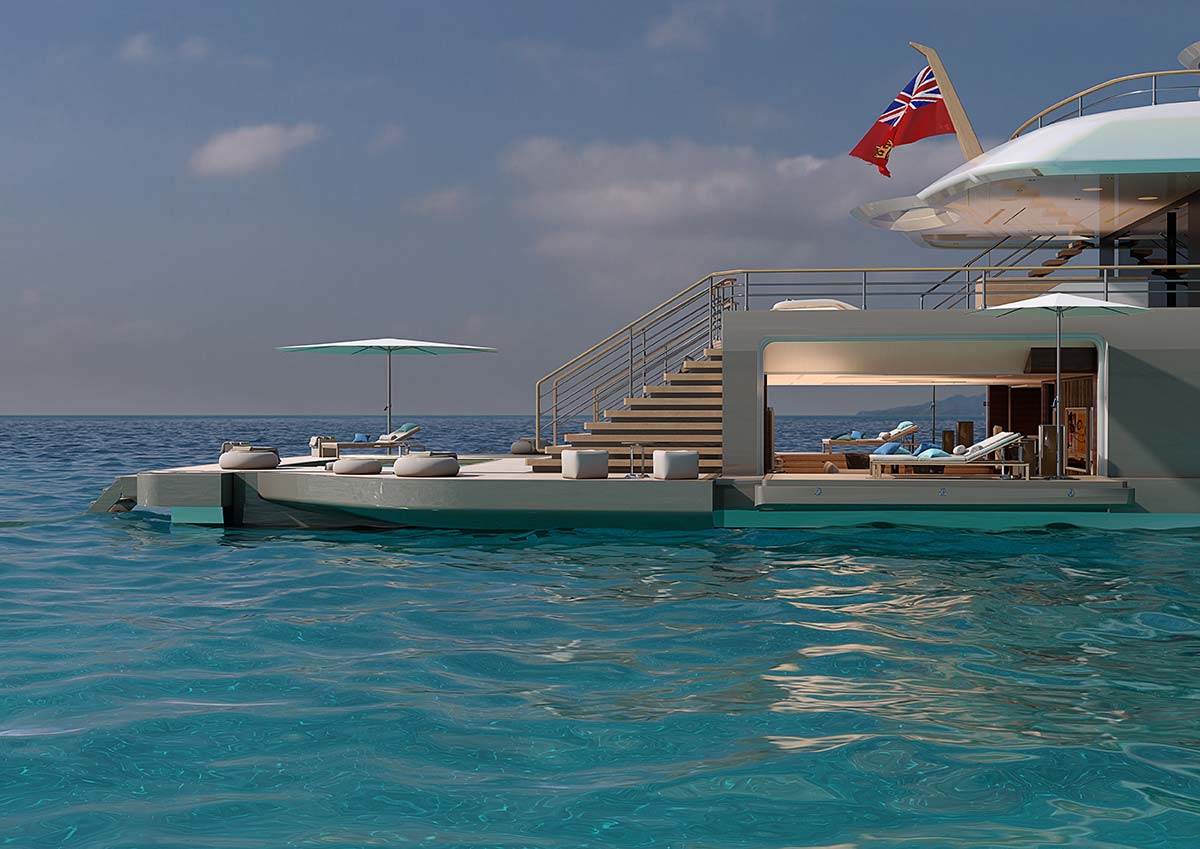
Moonflower 72 by Wider Yachts

Moonflower 72 by Wider Yachts
Massimo Gino: As for the style, as we deal with boats from 33 feet to 180-meters, sailboats, motorboats, series, one-offs, and with different clients, costs, and time frames, there is always a lot of synergy and a lot of spill-over with an open-minded approach between quite different sectors.
Considering the different types, sizes, and modes of boating, if you had to identify a point of connection in your work, would it be the quality of the experience you create on your boats? Or an ideal of beauty?
Massimo Gino: Yes, from 33 feet up, even considering that sailing and motoring are very difficult ways of experiencing the sea, the point of connection is precisely the quality of the experience on board, the relationship, and the connection with the sea.
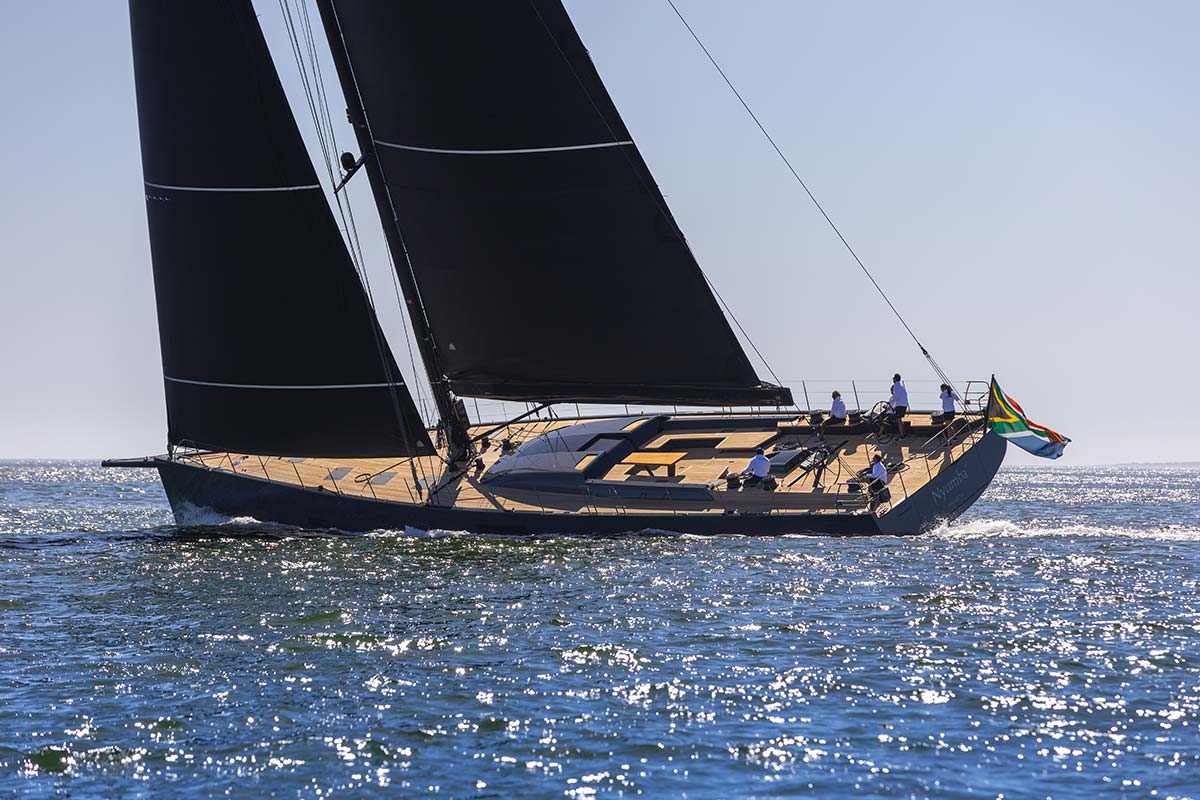
SW 96 GT Nyumba by Southern Wind
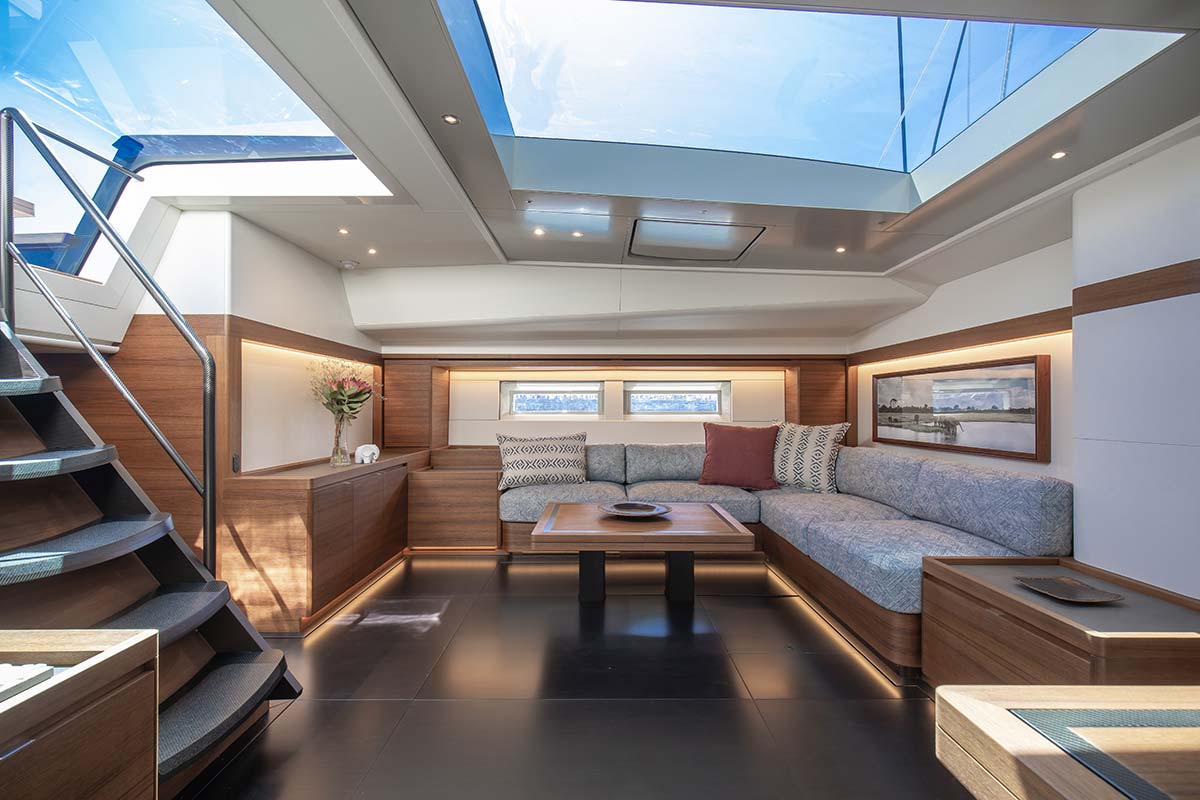
SW 96 GT Nyumba by Southern Wind
Mario Pedol: Each type has its own potential qualities that vary based on size, use, and purpose. The practice of cultivating elegance on the most beautiful boating object there is, the sailboat, is a training ground in beauty. It means having the constant habit of seeking beauty. Over the years, the market has recognized this quality in our mark as yacht designers. Having an eye to recognize and achieve beauty in forms is a natural talent, and our history and culture are the fundamental breeding ground for that.
Massimo Gino: Beauty of the exteriors also means care to be restrained, balanced, and never going too far in the pursuit of the “wow effect” at any cost, then quickly grows tiresome.
Mario Pedol: We see beauty in simplicity. We believe “simplicity is the essence of good design.” It is not rational. It’s an instinctive matter of taste, found in the mark of each designer.
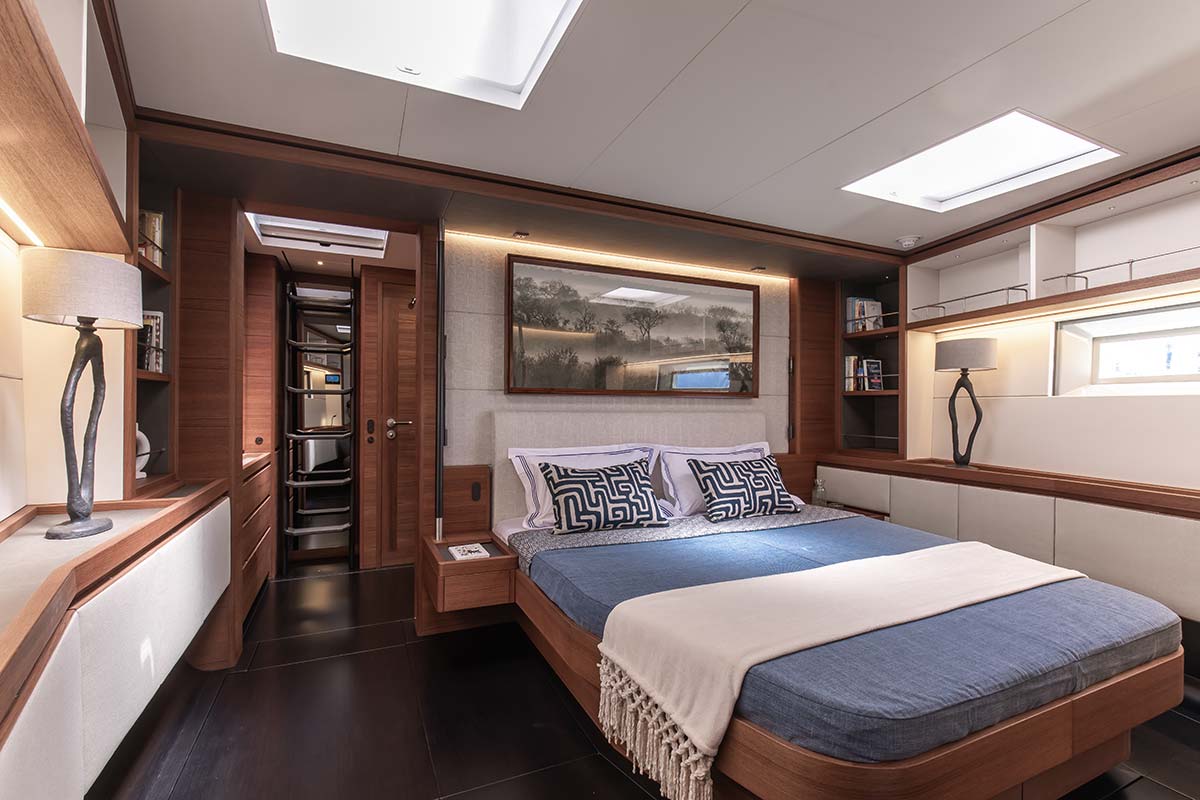
SW 96 GT Nyumba by Southern Wind
How important is research into materials? Especially in the interiors.
Massimo Gino: For the interiors, our research and choice go in the direction of simple, natural materials, oil, or wax finishes with natural treatments to be able to live in a space that is pleasant to the touch. Here too there is a lot of spillover between the various sectors. For example, for a first production of a bathroom with epoxy plaster with sand-loaded resins, we are looking for the best plaster with high quality so that it can be replicated. There is also a lot of work on materials and finishes because they have to be feasible and reproducible. You have to find a solution that can really be used on boats. This is why the old file cabinets that used to hold the original A1 design drawings now we keep material samples, a material board for each boat.
On the issue of hybrid propulsion, is there a real, ongoing evolution?
Mario Pedol: It is very real in sailboats. For example, the SW 96 GT Nyumba for Southern Wind, debuted in early 2023 and has a hybrid propulsion with two 125 horsepower generators, and an electric motor on the axle line with variable pitch. In production mode, i.e. sailing at 16 knots, the propeller is activated which slows down the cruising speed by a single knot but can produce 31 kW of electric energy, the greenest energy possible, that is produced with the wind. In an object that is among the greenest in the world, it is a way to accumulate win-produced energy with a reverse hybrid system, like a windmill blade but in water.
With that 31 kW and the 90 kWh battery bank, the boat can sail in silent mode for 8 hours straight. In theory, if you make sure to recharge it, the motor could also never be turned on, even when entering or exiting ports or when moored. There are many usable systems. The most complicated part is developing a management system that can be easy to use so that the captains feel sure in guiding the boat. The SW 108, which is under construction, is also hybrid because awareness of environmental protection and energy savings is growing. Experimentation is underway on the motor for using hydrogen, like for cars, even though it is still a bit behind. Still, we’re starting to see glimpses of fuels like methanol for fuel cells.

